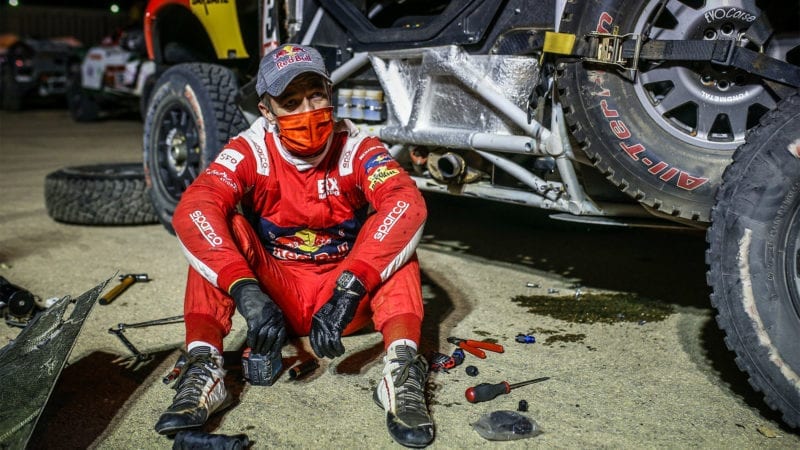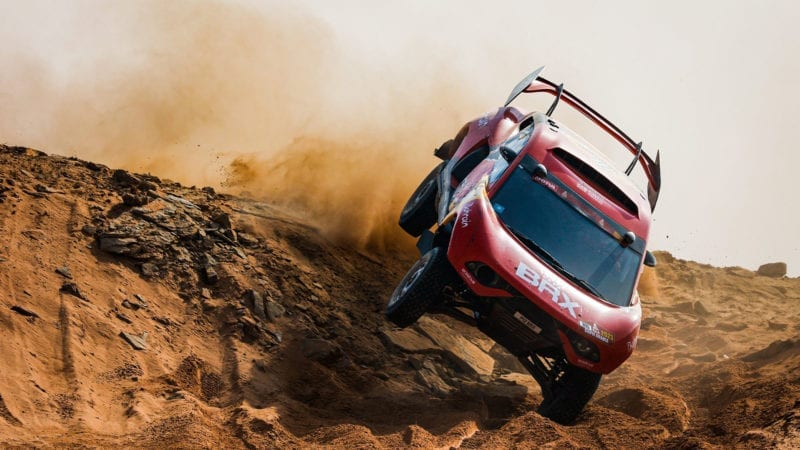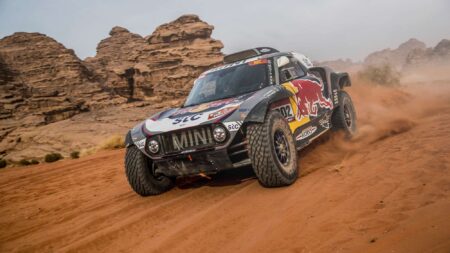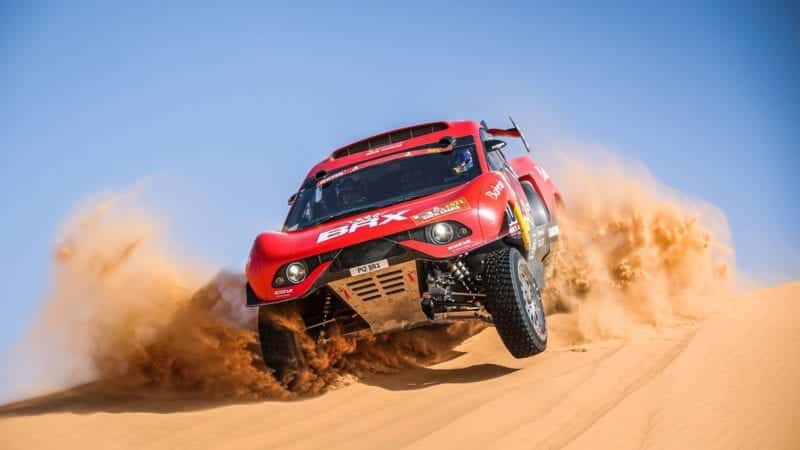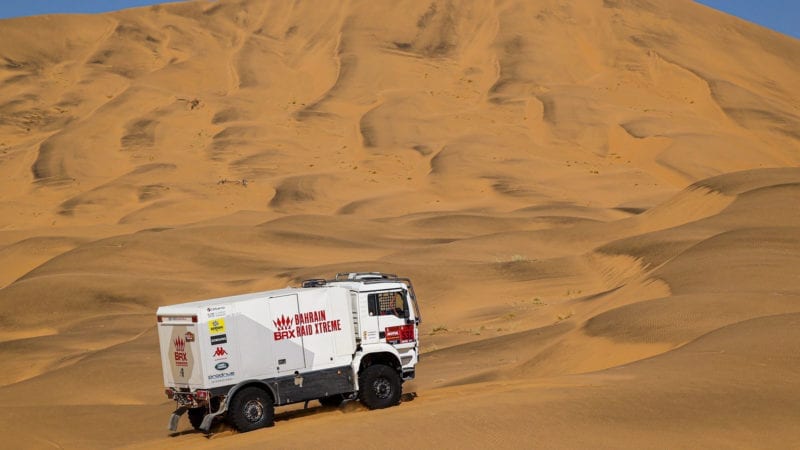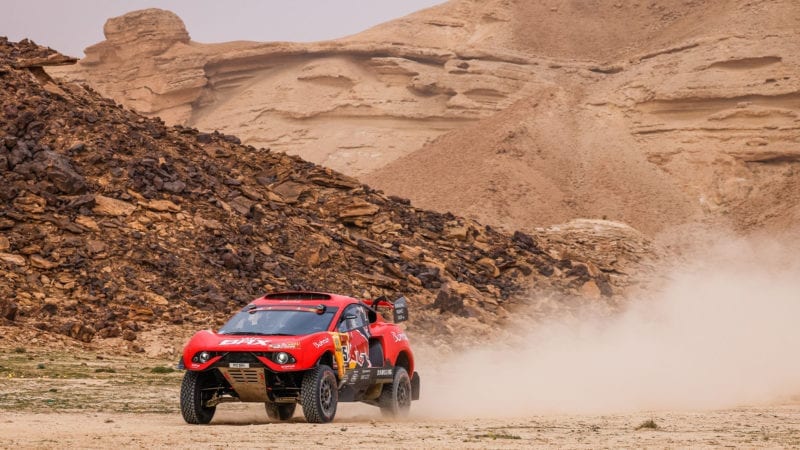The Frenchman bounced back on Stage Two though, setting the sixth fastest time, but hit further navigation issues which would continue to plague him for the rest of the rally.
Sometimes a Dakar driver has to use compass directions, at other times just follow the tyre tracks of those that have gone before. For Loeb the latter became increasingly difficult as the shifting sands of Saudi Arabia made it almost impossible for the driver to find a well-defined route.
“For me, as long as you’re off-road, you sometimes need to follow the compass – it’s not a problem,” he says. “The main issue occurs when we needed to go to follow a track [made by other cars] and the track disappears because it was windy before.
“And when you are on the track, you need to follow it. It’s [successful navigation] not only [down to] the compass. The compass can change but you [sometimes] still need to follow [the tracks made by other cars]. But if you don’t see the lines, you don’t see the tracks, you don’t know where to go. And that causes problems.”
Loeb battled on though and, despite picking up three more punctures, was sixth fastest again on Stage Three to haul himself up the same position in the overall standings.
He went even further on Stage Four, a 209-mile run from Wadi Ad-Dawasir to the Saudi Arabian capital Riyadh. Loeb had risen to fourth, just one place off the podium placings, after being 22nd on Stage One. It was clear, on pace at least, that Loeb and the Hunter are a potent combination.
However, it was here that things started to really unravel. Loeb exceeded the speed limit in a controlled area, and was duly slapped with a 5-minute penalty. The BRX driver blamed a faulty GPS system for not warning him (via an electronic alarm sounding) that he was in a slow zone, with even the equipment provider backing him up. However, the stewards were unrelenting.
The Frenchman was not backward with coming forwards in directing his subsequent ire towards the stewards.
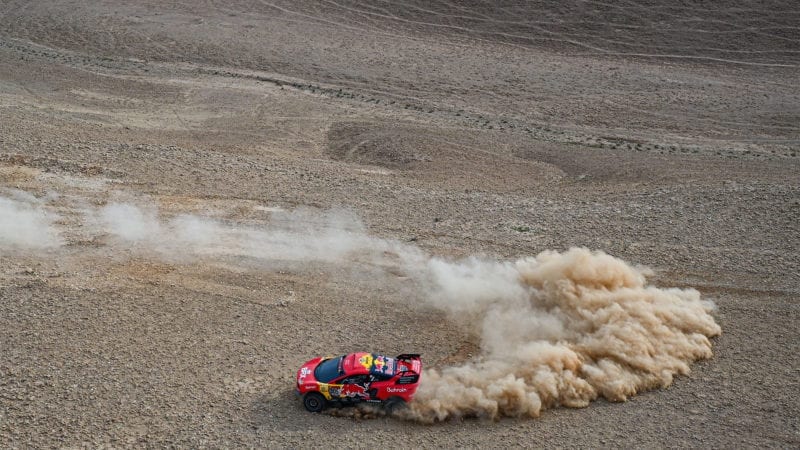
Many a u-turn: navigational issues plagued Loeb and Elena throughout
Eric Vargiolu / DPPI
“You have begun to know me a little for all these years and I very rarely ‘rant’,” Loeb said in a post on Instagram.
“But tonight, I need to share with you the incompetence of the stewards’ panel of an event as legendary as the Dakar Rally. We have just been penalised five minutes for exceeding speed in a controlled area. In all my participations, in all the stages and in all the speed control zones, I always respect this rule as best I can.
